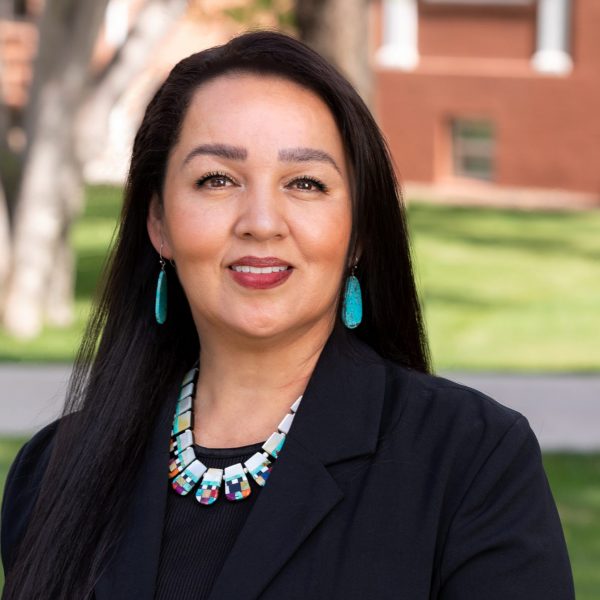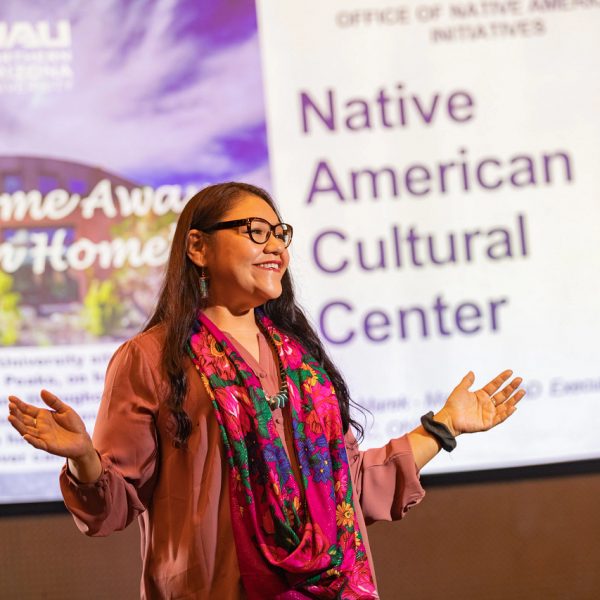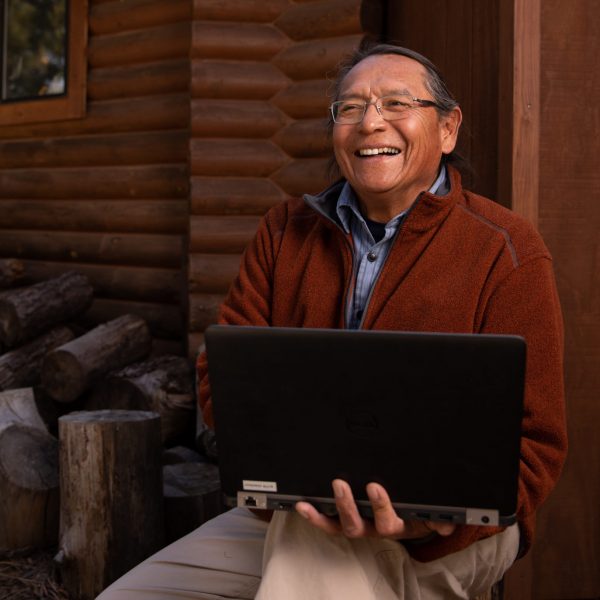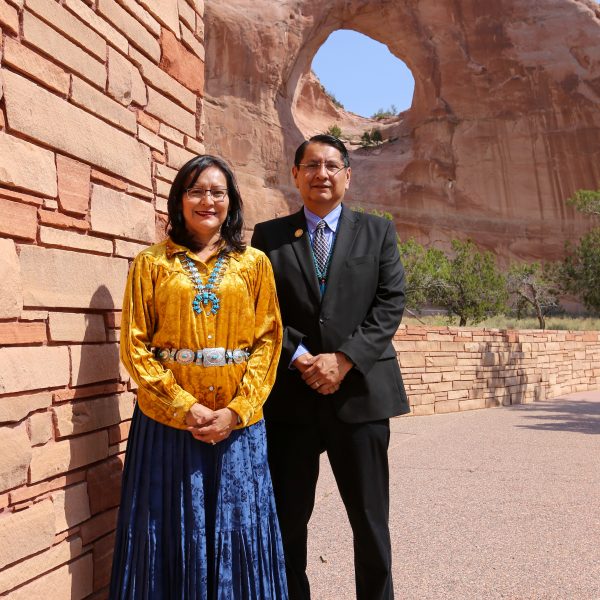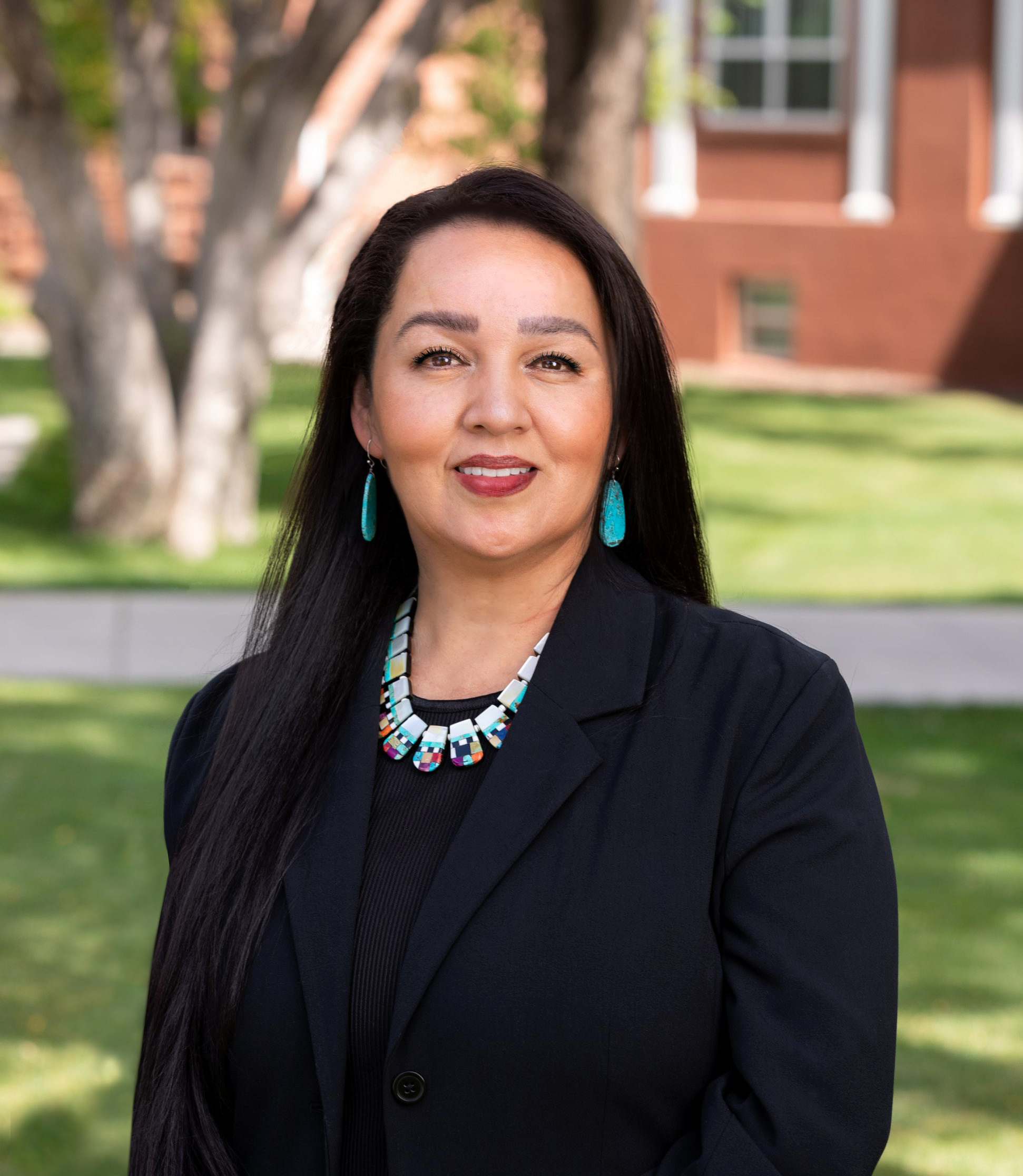
The Institute for Tribal Environmental Professionals works with Indigenous nations to protect their land for generations to come.
Seven may be the most important number in Ann Marie Chischilly’s life. That’s how many generations she considers before making any decision. The Seventh Generation Principle is an Indigenous philosophy of the Lakota Holy Man, Black Elk, from the late 1800s. He prophesied that for six generations, Native peoples would suffer immensely. A seventh generation would then rise to heal the broken hoop of life. That seventh generation walks among us today; Chischilly is raising a seventh generation son. The philosophy counsels all people to consider the consequences of every action, so that in seven generations our descendants will live in a sustainable and healthy world.
Chischilly, who is Diné, has served as the executive director of NAU’s Institute for Tribal Environmental Professionals (ITEP) since 2011. More recently, she also assumed the role of interim vice president of Native American Initiatives at NAU. The Seventh Generation Principle guides her in both positions.
“Nothing’s more important to me than keeping the land, the air, the water in a sustainable and healthy condition for seven generations to come,” she said.
ITEP was established at Northern Arizona University in 1992. The goal was to bring together Tribal governments; federal, state, and local governments; research and technical resources on campus; and entities in the private sector to strengthen environmental protection of natural resources on Tribal lands. The institute is 99 percent grant-funded, according to Chischilly, and brings in one of the highest amounts of grant money on campus.
Another critical number in Chischilly’s life is 573. That’s how many federally recognized sovereign nations are in the United States today, according to the Bureau of Indian Affairs. That number is notable because Chischilly wants to make sure each and every Indigenous nation in the United States has the knowledge, tools, support, and contacts they need to address environmental issues, including air and water quality, the impacts of climate change, and anything else that affects the health of the land and its people.
If that seems like a lofty goal, consider that ITEP has served 545 of those Native American nations in the last 29 years. That’s an astonishing 95 percent of all Tribes in the United States, a result which Chischilly credits to the incredible dedication of ITEP’s team.
It isn’t easy to quickly break down the wide-ranging work done by the institute. A simplified summary puts their work into three categories:
The first is ITEP’s work with Tribes, the basis of which is to listen. When a Tribe comes to ITEP for help, the team deploys a number of tools: professionals visit and assess the situation; the Tribes express their needs during planning meetings; and the ITEP team consults Elders, multiple advisory committees, and Tribal professionals. Only then can they create a plan to address the issues. The institute also develops courses, trainings, educational outreach, and conferences to expand the educational resources available to Tribes.
The second category is policy. ITEP develops and maintains contacts with numerous US governmental agencies—including the Environmental Protection Agency, the Bureau of Indian Affairs, the Department of Agriculture, and others—as well as officials involved in environmental regulation and the disbursement of resources to fund critical projects. Chischilly and her team play a key role in creating detailed reports that are used to develop national policies and procedures regarding the myriad of environmental issues facing Tribes across the country.
The third category is student engagement. In addition to student interns, ITEP regularly engages with Native students at NAU, Tribal colleges and universities, and students from kindergarten and up. Through youth engagement, ITEP helps to prepare the next generation of Native American environmental stewards.
What I deeply appreciate about ITEP is the advocacy for Indigenous people. ITEP does everything they can to help Tribal communities. That’s essential, especially for smaller Tribes.
To do all of this, Chischilly and ITEP Assistant Director Mehrdad Khatibi, who she calls “one of the strongest backbones for ITEP,” oversee a staff of about 30 and a regular rotation of about a dozen students and interns.
ITEP will celebrate its 30th anniversary next year after two years dampened by COVID. The institute puts on several national conferences each year that draw hundreds of environmental workers and Indigenous leaders. With COVID, the meetings were forced to go virtual. And while that caused problems (for example, Tribes from remote areas without reliable internet access couldn’t join), it also opened doors. A climate conference that was to have accommodated 300 people in Milwaukee shifted online with surprising results. “We opened it up, and it just grew,” Chischilly said. “We grew to around 2,400 registrants from 30 different countries.”
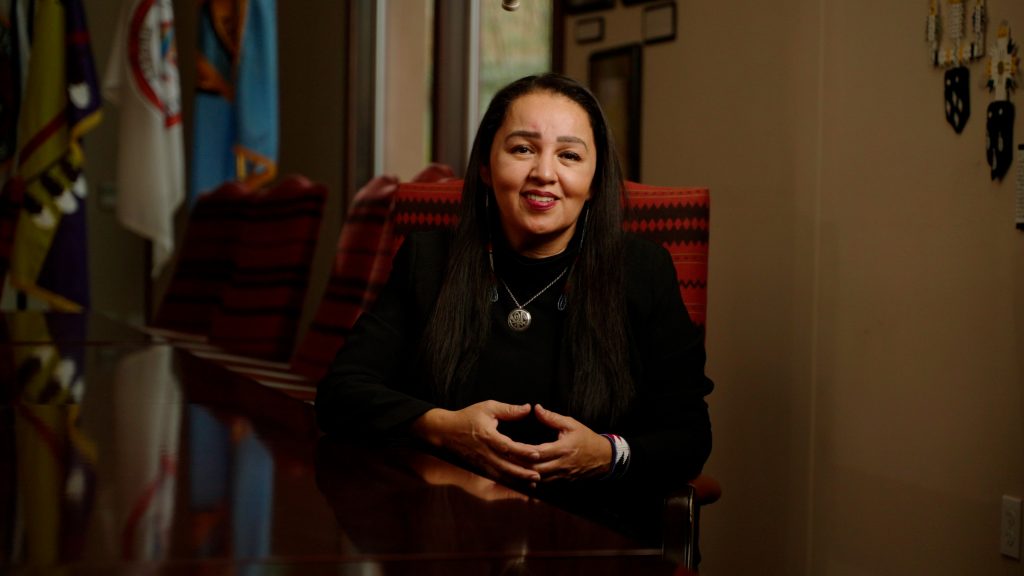
For Assistant Director Khatibi, that extended reach will play a part in ITEP’s future plans. He sees a growing need to work with Tribes on renewable energy and other issues related to global climate change. “If you can become sustainable from an energy, from a water, and from a food sovereignty perspective, you’ve done a lot to help protect your community against some of the changes and disruptions that might come with climate change.”
Many ITEP projects include collaborations with academics and researchers from across campus. For the student interns, working for ITEP can open career doors.
“We try to have them do meaningful projects with federal agencies or Tribal environmental departments so that they have an understanding of what it might be like to have a position like that,” says Khatibi. Among the many former ITEP interns is Navajo Nation President Jonathan Nez.
Jeri Garfield, a current student intern at ITEP, is working on her bachelor’s in Public Health at NAU. She spent last summer comparing air quality readings from Mesa Verde National Park with extreme weather events. Her work resulted in a published, peer-reviewed paper, of which she is a co-author along with first author Marisa Gonzalez, a graduate student at the University of Arizona. The experience, she said, was eye-opening. “It’s amazing how much this internship changed my perceptions,” she said. “I want to thank ITEP; it helped me expand my knowledge.” After she earns her degree, she wants to put her learning into action in the Navajo Nation where she grew up. “My goal is to come back with not just my degree but solutions and strategies.”
Jonathan Credo also spent his summer working with ITEP. Credo, who is half-Navajo, earned dual bachelor’s degrees in Chemistry and Biomedical Science from NAU in 2014. He’s now in an MD/PhD program at the University of Arizona, but he sought out the opportunity to work with ITEP at NAU. His project involved installing air and water quality monitoring devices for the Cocopah Indian Tribe and training their employees to use them. “It was a great program, a great opportunity,” Credo said. “What I deeply appreciate about ITEP is the advocacy for Indigenous people. ITEP does everything they can to help Tribal communities. That’s essential, especially for smaller Tribes.”
Chischilly and Khatibi both stressed that advocating for and serving Tribal communities is the essence of ITEP’s mission. “I have an incredible team that’s not only dedicated to ITEP,” Chischilly said, “but dedicated to the mission of serving other people.” Chischilly learned about service and environmental stewardship from her grandmothers and mother; it’s a lesson she is passing down to her teenage son.
“My grandmothers and mother prepared me for this time,” she said. “And so, I take my work, and I think of them all the time. When I have hard things to think about, I always think about my ancestors who endured the Long Walk.* And I think my day is nothing like theirs. So, I’m going to keep working hard, and I’m going to keep serving my people and look forward to that seven generations, where all of us, all humans, come together and recognize that this Earth is one world. And we need to protect it for seven generations to come.”
______________________________________________________________________________
From Cline Library Special Collections and Archives
Indigenous Voices of the Colorado Plateau
“In 1864 the United States military forced 11,468 Navajos from Fort Canby, Arizona (known today as Fort Defiance) to walk more than 300 miles to Bosque Redondo, New Mexico. The weaker people who could not keep up pace with the military were either left to die or were shot. Several hundred Navajo died on this forced march [the Long Walk]. More Navajo died at Bosque Redondo—close to 2,000.
The water from the Pecos River near Bosque Redondo, used by the Navajo in everyday life, [became] contaminated. The water caused intestinal problems for the captives. Disease was rampant, and armyworm destroyed their corn crops. Wood, provided by cottonwood trees, became scarce because of the demands placed on this resource, used for cooking and keeping warm.
Finally, in 1868, the US Government released the Navajo, allowing them to return to some of their ancestral homelands. A Treaty was signed in 1868 that permitted the Navajo to move back on a small parcel of land totaling approximately 3.5 million acres. This parcel did include part of the original ancestral Navajo land.”

